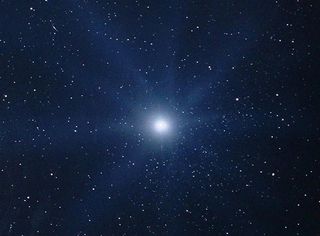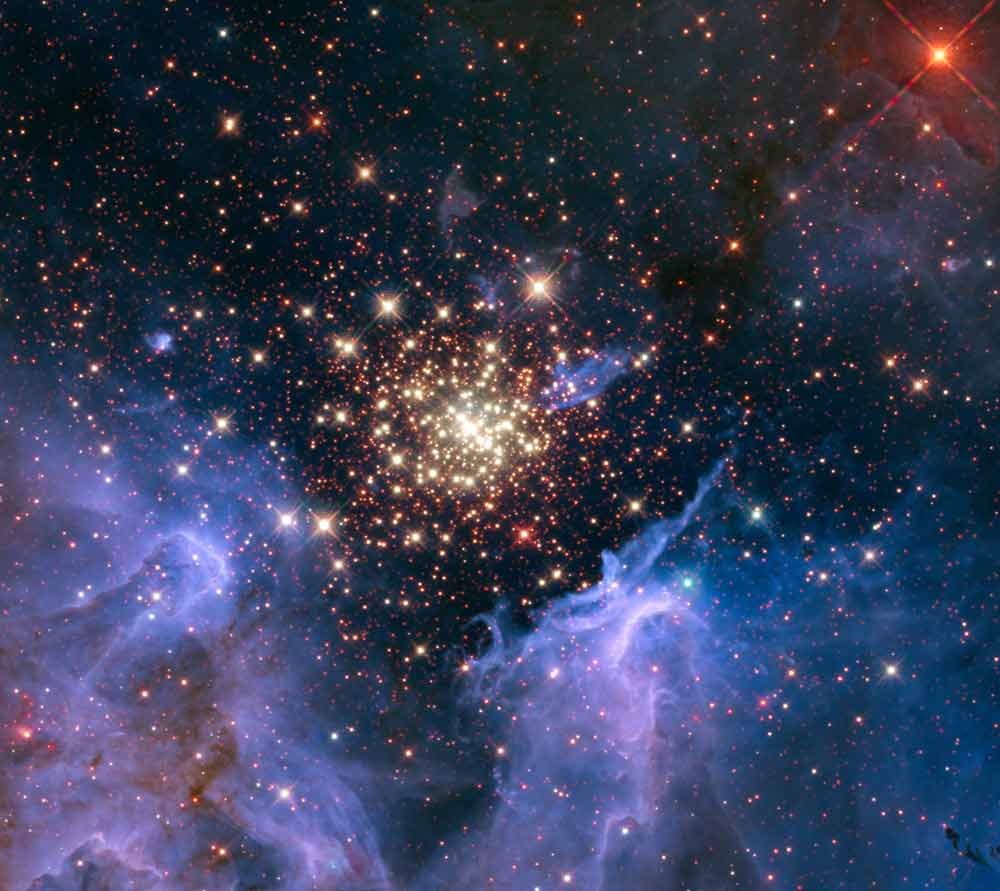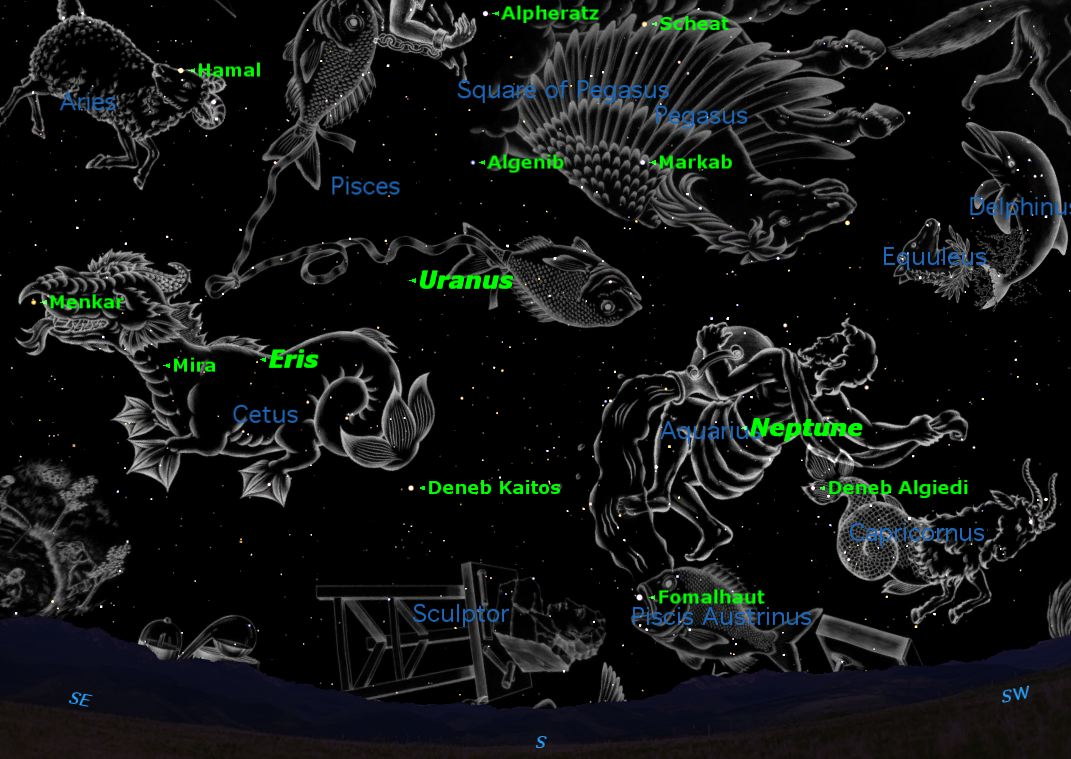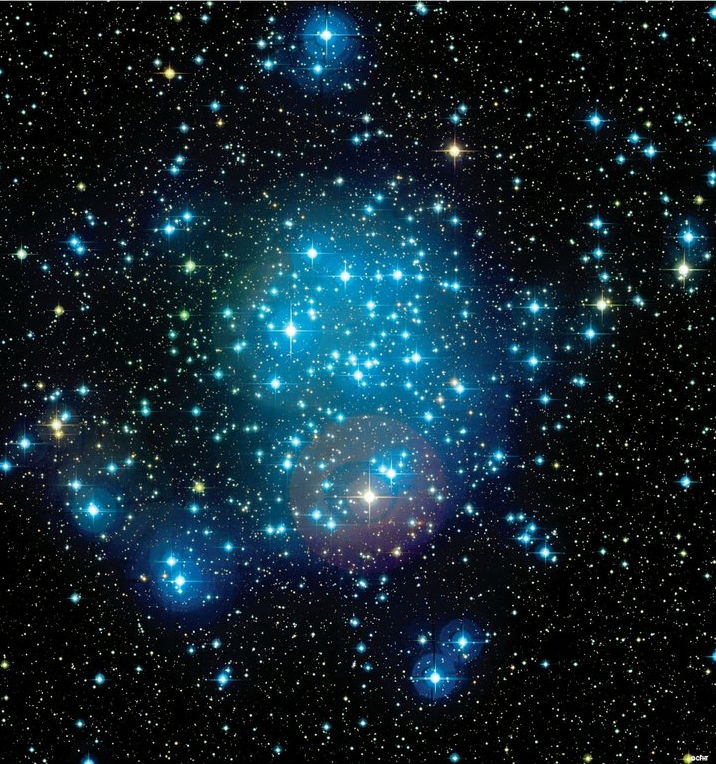what is the most common element in a star
Star Facts: The Basics of Star Names and Stellar Evolution

Stars are monster, luminous spheres of plasma. On that point are billions of them — including our own sun — in the Milky Way System Galaxy. And in that respect are billions of galaxies in the world. To that extent, we have noninheritable that hundreds also have planets orbiting them.
History of observations
Since the cockcrow of recorded civilization, stars played a tonality role in organized religion and proved vital to navigation. Astronomy, the subject area of the heavens, may be the most past of the sciences. The invention of the scope and the discovery of the laws of motion and gravity in the 17th C prompted the realization that stars were just like the sun, all obeying the same laws of physics. In the 19th century, photography and spectroscopy — the study of the wavelengths of light that objects emit — made IT possible to investigate the compositions and motions of stars from afar, ahead to the development of astrophysics.
In 1937, the first radio reflector was built, sanctionative astronomers to detect otherwise invisible radiation from stars. The offse gamma-ray telescope launched in 1961, pioneering the study of star explosions (supernovae). Also in the 1960s, astronomers commenced infrared observations using balloon-borne telescopes, gathering info nigh stars and other objects based happening their heat emissions; the original infrared telescope (the Infrared Astronomical Satellite) launched in 1983.
Microwave emissions were first studied from blank space in 1992, with NASA's Cosmic Microwave Background Explorer (COBE) planet. (Microwave emissions are generally used to probe the young universe's origins, but they are now and then used to contemplate stars.) In 1990, the ordinal space-based visual telescope, the Hubble Space Scope, was launched, providing the deepest, all but detailed telescopic-light view of the universe.
There have been, of trend, more high observatories (in entirely wavelengths) finished the years, and symmetric Sir Thomas More powerful ones are planned. A couple of examples are the European Extremely Large Telescope (E-ELT), which is planned to go observations in 2024 in infrared and optical wavelengths. Also, NASA's James Sidney James Webb Place Telescope – billed every bit a successor to Hubble – will launching in 2018 to probe stars in unseeable wavelengths.
Star naming
Ancient cultures saw patterns in the heavens that resembled people, animals or usual objects — constellations that came to represent figures from myth, such as Orion the Hunter, a sub in Hellene mythology. Astronomers now often exercise constellations in the naming of stars. The International Astronomical Union, the world authority for assigning names to celestial objects, officially recognizes 88 constellations. Commonly, the brightest ace in a constellation has "exploratory," the foremost letter of the Greek alphabet, A part of its scientific name. The second brightest star in a configuration is typically designated "beta," the third brightest "Gamma," and so on until all the Greek letters are used, after which numerical designations follow.
A number of stars let possessed names since antiquity — Betelgeuse, e.g., substance "the hand (or the armpit) of the behemoth" in Arabic. It is the brightest wi in Orion, and its technological name is Exploratory Orionis. Also, variant astronomers over the long time have compiled hotshot catalogs that use unique numbering systems. The Henry Draper Catalogue, named afterward a pioneer in astrophotography, provides spectral compartmentalisation and rough positions for 272,150 stars and has been widely used of by the astronomical community for over incomplete a century. The catalogue designates Betelgeuse atomic number 3 HD 39801.
Since thither are so many stars in the universe, the IAU uses a different system for newfound stars. Almost consist of an abbreviation that stands for either the type of star Oregon a catalog that lists information active the star, followed by a group of symbols. For illustration, PSR J1302-6350 is a pulsar, thus the PSR. The J reveals that a coordinate organization known as J2000 is being used, spell the 1302 and 6350 are coordinates similar to the latitude and longitude codes used on Earth.
In recent years, the IAU formalized several name calling for stars amid calls from the astronomical profession to let in the public in their appellative work. The IAU formalized 14 star name calling in the 2015 "Name ExoWorlds" contest, taking suggestions from science and astronomy clubs more or less the world.
Then in 2016, the IAU approved 227 starring name calling, mostly taking cues from antiquity in making its decision. The goal was to quash variations in star names and also spelling ("Formalhaut", for example, had 30 recorded variations.) However, the longstanding key "Alpha Centauri" – referring to a famous star system with planets just four light long time from World – was replaced with Rigel Kentaurus.

Ace organisation
A star develops from a giant, slowly rotating taint that is made up entirely or almost entirely of hydrogen and helium. Due to its own gravitational clout, the cloud behind to collapse inward, and as it shrinks, it spins more and more quickly, with the satellite parts flattering a disk while the inward parts get a roughly spherical clump. Reported to NASA, this collapsing material grows hotter and denser, forming a ball-shaped protostar. When the heat and pressure in the protostar reaches about 1.8 billion degrees Fahrenheit (1 million degrees Celsius), atomic nuclei that normally repel each other start fusing together, and the star ignites. Cell organ nuclear fusion reaction converts a dwarfish add up of the mass of these atoms into rattling amounts of zip — e.g., 1 Gram of batch regenerate entirely to energy would make up equal to an explosion of or s 22,000 scores of TNT.
Phylogenesis of stars
The life cycles of stars travel along patterns based mostly on their initial mass. These include intermediate-mass stars such as the sun, with half to eight multiplication the mass of the Sun, high-mass stars that are more than eight star masses, and low-mass stars a tenth to half a star mass in size. The greater a star's mass, the shorter its lifespan generally is. Objects littler than a tenth of a solar mass do non have enough gravitative pull to ignite nuclear fusion — some power become failed stars titled brown dwarfs.
An intermediate-mass star begins with a cloud that takes about 100,000 long time to collapse into a protostar with a surface temperature of about 6,750 F (3,725 C). Later on H fusion starts, the result is a T-Tauri star, a variable that fluctuates in luminance. This star continues to collapse for roughly 10 million years until its expansion due to push generated aside nuclear fusion is well-balanced by its contraction from gravity, later on which point it becomes a principal-sequence star that gets all its Energy Department from hydrogen fusion in its core.
The greater the mass of such a star, the more quickly information technology will use its atomic number 1 fuel and the shorter it stays on the main succession. Afterward all the hydrogen in the core is fused into helium, the star changes apace — without nuclear radiation to resist it, gravity directly crushes matter down into the star's burden, cursorily heating the star. This causes the leading's outer layers to expand enormously and to cool and burn red as they do so, rendering the champion a red giant star. Helium starts fusing together in the core, and once the atomic number 2 is at peace, the core contracts and becomes hotter, erst more expanding the star but making IT bluer and brighter than before, blowing absent its outermost layers. After the expanding shells of gas pass off, the remaining core is left, a white dwarf that consists mostly of carbon copy and oxygen with an initial temperature of approximately 180,000 degrees F (100,000 degrees C). Since white dwarves have no fire leftist for fusion, they grow tank and cooler all over billions of years to get over undiluted dwarves too conk to detect. (Our sun should leave the main sequence in about 5 billion years.)
A high-raft wi forms and dies promptly. These stars figure from protostars in hardly 10,000 to 100,000 eld. While along the main chronological succession, they are hot and blue, some 1,000 to 1 jillio times as bright as the sun and are roughly 10 multiplication wider. When they leave the independent sequence, they get along a bright bolshy supergiant, and eventually become hot enough to fuse carbon copy into heavier elements. After more or less 10,000 years of such fusion, the result is an iron core roughly 3,800 miles wide (6,000 km), and since any more fusion would take DOE or else of liberating it, the virtuoso is doomed, as its centre radiation posterior no thirster resist the force of gravity.
When a star reaches a mass of more than 1.4 solar hoi polloi, electron pressure cannot corroborate the core against further collapse, accordant to NASA. The result is a supernova. Gravity causes the nub to collapse, making the core temperature ascend to nearly 18 billion degrees F (10 billion degrees C), break the iron down into neutrons and neutrinos. In about one moment, the core shrinks to about six miles (10 km) wide-eyed and rebounds just look-alike a natural rubber testis that has been squeezed, sending a blast wave through the star that causes fusion to occur in the far layers. The hotshot and then explodes in a then-called Type II supernova. If the remaining stellar core was less than about three star people large, IT becomes a neutron star made up nearly entirely of neutrons, and rotating neutron stars that beam out perceptible radio pulses are known American Samoa pulsars. If the major Congress of Racial Equality was larger than about tierce solar masses, no known storm can support it against its own gravitational pull, and it collapses to form a black hole.
A low-mass star uses H fire then sluggishly that they can shine as main-sequence stars for 100 billion to 1 trillion years — since the universe is only about 13.7 billion geezerhood honest-to-goodness, according to NASA, this means zero low-mass star has ever died. Still, astronomers calculate these stars, known as red dwarfs, will never fuse anything merely hydrogen, which means they leave never become red giants. Instead, they should eventually scarce cool off to become white dwarfs and then black dwarves.

Binary stars and other multiples
Although our solar system only has one star, about stars like our sun are not solitary, but are binaries where two stars cranial orbit apiece past, Oregon multiples involving even to a greater extent stars. In fact, just one-third of stars care our sunlight are single, patc two-thirds are multiples — for example, the closest neighbor to our solar system, Proxima Centauri, is part of a multiple system that also includes Alpha Centauri A and Alpha Centauri B. Still, sort out G stars like our sun only if pay some 7 pct of all stars we see — when it comes to systems in general, about 30 percent in our galaxy are multiple, while the rest are single, accordant to Charles J. Lada of the Harvard-Smithsonian Center for Astrophysics.
Positional representation system stars originate when two protostars form near each early. One member of this pair hind end influence its companion if they are close enough put together, stripping away matter in a physical process called good deal transfer. If one of the members is a giant star that leaves behind a neutron star or a black trap, an X-ray binary can form, where matter pulled from the stellar remainder's companion buttocks begin extremely hot — more than 1 million F (555,500 C) and emit X-rays. If a positional representation system includes a white dwarf, gas pulled from a companion onto the Andrew D. White shadow's surface can coalesce violently in a ostentation named a nova. At multiplication, sufficient gas builds up for the dwarf to crash, directive its carbon to fuse nearly instantly and the nanus to blow up in a Type I supernova, which prat outshine a coltsfoot for a few months.
Characteristics of stars
Brightness
Astronomers describe star brightness in damage of magnitude and luminosity.
The order of magnitude of a adept is based on a scale more 2,000 years old, devised past Greek astronomer Hipparchus close to 125 BC. He numbered groups of stars based on their brightness as seen from Earth — the brightest ones were called first magnitude stars, the next brightest were second order of magnitude, etcetera equal to 6th order of magnitude, the faintest available ones. Nowadays astronomers come to to a star's luminosity as viewed from Solid ground as its plain magnitude, but since the length between Earth and the star can sham the light one sees from it, they now also describe the actual brightness of a star victimisation the terminal figure absolute order of magnitude, which is defined by what its seeming magnitude would cost if information technology were 10 parsecs or 32.6 light long time from Land. The magnitude scale straightaway runs to much than sextuplet and less than one, even up downhill into negative numbers — the brightest star in the night sky is Sirius, with an plain order of magnitude of -1.46.
Luminosity is the power of a star — the rate at which it emits get-up-and-go. Although power is generally measured in watts — for instance, the insolate's luminosity is 400 trillion trillion watts— the luminosity of a star is usually measured in footing of the luminosity of the sun. For example, Exploratory Centauri A is about 1.3 times as luminous as the sun. To figure tabu luminosity from absolute magnitude, one must calculate that a difference of five on the absolute magnitude scale is equivalent to a factor of 100 on the luminosity scale — for instance, a star with an absolute order of magnitude of 1 is 100 times as luminous as a star with an absolute magnitude of 6.
The cleverness of a whizz depends connected its surface temperature and sized.
Color
Stars interpose a stove of colors, from chromatic to yellowish to blue. The color of a star depends on surface temperature.
A star mightiness appear to have a idiosyncratic color, merely actually emits a broad spectrum of colors, possibly including everything from radio set waves and infrared rays to invisible beams and gamma rays. Different elements operating room compounds absorb and emit different colors or wavelengths of light, and by poring over a headliner's spectrum, same can divine what its paper might be.
Open temperature
Astronomers measure star temperatures in a unit acknowledged as the kelvin, with a temperature of zero K ("absolute nada") equaling minus 273.15 degrees C, or minus 459.67 degrees F. A dark red star has a shallow temperature of about 2,500 K (2,225 C and 4,040 F); a bright bolshy star, about 3,500 K (3,225 C and 5,840 F); the sun and different yellow stars, about 5,500 K (5,225 C and 9,440 F); a drear star, about 10,000 K (9,725 C and 17,540 F) to 50,000 K (49,725 C and 89,540 F).
The surface temperature of a star depends in part on its mass and affects its brightness and color. Specifically, the luminosity of a star is proportional to temperature to the fourth tycoo. For illustration, if two stars are the unvarying size but one is twice Eastern Samoa sulfurous as the new in kelvin, the former would be 16 times A luminous as the latter.
Size
Astronomers generally measure the sizing of stars in terms of the radius of our sun. For instance, Alpha Centauri A has a radius of 1.05 solar radii (the plural of spoke). Stars home in size from neutron stars, which can be only 12 miles (20 kilometers) thick, to supergiants roughly 1,000 multiplication the diam of the sun.
The sizing of a star affects its brightness. Specifically, luminosity is proportionate to radius squared. E.g., if deuce stars had the same temperature, if one star was doubly arsenic wide equally the some other one, the former would be fourfold as nitid as the latter.
Mass
Astronomers represent the flock of a stellar in price of the star mass, the stack of our solarise. For instance, Alpha Centauri A is 1.08 star masses.
Stars with similar hoi polloi might not be connatural in size because they give different densities. For instance, Sirius B is roughly the one mass as the sun, but is 90,000 times as dense, and and then is only a ordinal its diameter.
The mass of a whizz affects surface temperature.
Flux
Stars are spinning balls of roiling, electrically charged gas, and thus typically generate magnetic fields. When IT comes to the sun, researchers have got observed its flux can become extremely concentrated in small areas, creating features ranging from sunspots to spectacular eruptions known A flares and coronal mass ejections. A recent survey at the Harvard-Smithsonian Nerve centre for Astrophysics base that the mediocre stellar magnetic field increaseswith the star's rate of gyration and decreases American Samoa the star ages.
Metallicity
The metallicity of a star measures the amount of "metals" it has — that is, any constituent heavier than He.
Three generations of stars may exist supported metallicity. Astronomers have non hitherto discovered any of what should be the oldest generation, Population III stars born in a universe without "metals." When these stars died, they free heavy elements into the cosmos, which Population II stars merged comparatively small amounts of. When a number of these died, they free more heavy elements, and the youngest Universe I stars like our sun contain the largest amounts of worrying elements.
Maven assortment
Stars are typically classified by their spectrum in what is known equally the John Pierpont Morgan-Keenan or MK system. There are eight spectral classes, each similar to a range of surface temperatures — from the hottest to the coldest, these are O, B, A, F, G, K, M and L. Each ghostly class also consists of 10 spectral types, ranging from the numeral 0 for the hottest to the numeric 9 for the coldest.
Stars are also classified by their luminosity under the Morgan-Keenan system. The largest and brightest classes of stars have the last numbers, given in Roman numerals — IA is a bright supergiant; Ib, a supergiant; II, a bright giant; III, a giant; IV, a subgiant; and V, a main sequence or gnome.
A full-dress MK assignment includes some spectral type and luminance class — e.g., the sunlight is a G2V.

Stellar structure
The structure of a superstar lav ofttimes be thinking of as a series of thin nested shells, somewhat the likes of an onion.
A star during most of its life is a main-succession star, which consists of a core, radiative and convective zones, a photosphere, a chromosphere and a corona discharge. The core is where all the nuclear fusion takes places to power a star. In the radiative zone, energy from these reactions is transported outward by actinotherapy, like heat from a lightbulb, while in the convective zone, zip is transported aside the agitated white-hot gases, like calorific aerate from a hairdryer. Massive stars that are Thomas More than respective times the mass of the sun are convective in their cores and radiative in their satellite layers, while stars comparable to the sun or less in mass are radiative in their cores and convective in their outer layers. Third-year-mass stars of spectral type A May be radiative throughout.
Later those zones comes the part of the star that radiates visible light, the photosphere, which is often referred to as the turn up of the star. After that is the chromosphere, a bed that looks cerise because of all the atomic number 1 found there. Finally, the outermost office of a star's atmosphere is the corona, which if super-hot might be linked with convection in the outmost layers.
Additional reporting by Elizabeth Howell and Nola Taylor Redd, Space.com contributors
Juncture our Blank Forums to keep talking space on the latest missions, night pitch and to a greater extent! And if you have a news tip, correction Beaver State comment, let us know at: residential district@space.com.
what is the most common element in a star
Source: https://www.space.com/57-stars-formation-classification-and-constellations.html

Posting Komentar untuk "what is the most common element in a star"